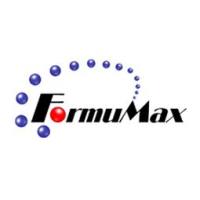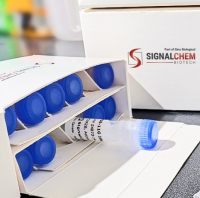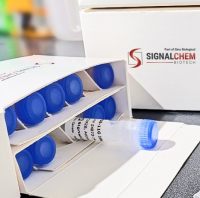Techniques for Loading Technetium-99m and Rhenium-186/188 Radionuclides into Pre-formed Liposomes for Diagnostic Imaging and Radionuclide Therapy
互联网
502
Liposomes can serve as carriers of radionuclides for diagnostic imaging and therapeutic applications. Herein, procedures are outlined for radiolabeling liposomes with the gamma-emitting radionuclide, technetium-99m (99m Tc), for non-invasive detection of disease and for monitoring the pharmacokinetics and biodistribution of liposomal drugs, and/or with therapeutic beta-emitting radionuclides, rhenium-186/188 (186/188 Re), for radionuclide therapy. These efficient and practical liposome radiolabeling methods use a post-labeling mechanism to load 99m Tc or 186/188 Re into pre-formed liposomes prepared in advance of the labeling procedure. For all liposome radiolabeling methods described, a lipophilic chelator is used to transport 99m Tc or 186/188 Re across the lipid bilayer of the pre-formed liposomes. Once within the liposome interior, the pre-encapsulated glutathione or ammonium sulfate (pH) gradient provides for stable entrapment of the 99m Tc and 186/188 Re within the liposomes. In the first method, 99m Tc is transported across the lipid bilayer by the lipophilic chelator, hexamethylpropyleneamine oxime (HMPAO) and 99m Tc-HMPAO becomes trapped by interaction with the pre-encapsulated glutathione within the liposomes. In the second method, 99m Tc or 186/188 Re is transported across the lipid bilayer by the lipophilic chelator, N,N -bis(2-mercaptoethyl)-N’,N’ -diethylethylenediamine (BMEDA), and 99m Tc-BMEDA or 186/188 Re-BMEDA becomes trapped by interaction with pre-encapsulated glutathione within the liposomes. In the third method, an ammonium sulfate (pH) gradient loading technique is employed using liposomes with an extraliposomal pH of 7.4 and an interior pH of 5.1. BMEDA, which is lipophilic at pH 7.4, serves as a lipophilic chelator for 99m Tc or 186/188 Re to transport the radionuclides across the lipid bilayer. Once within the more acidic liposome interior, 99m Tc/186/188 Re-BMEDA complex becomes protonated and more hydrophilic, which results in stable entrapment of the 99m Tc/186/188 Re-BMEDA complex within the liposomes. Since many commercially available liposomal drugs use an ammonium sulfate (pH) gradient for drug loading, these liposomal drugs can be directly radiolabeled with 99m Tc-BMEDA for non-invasive monitoring of tissue distribution during treatment or with 186/188 Re-BMEDA for combination chemo-radionuclide therapy.









